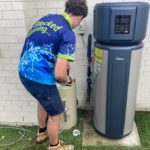Comprehensively Exploring the Influential Factors Behind Hurricane Storm Surge Dynamics
Delving into the Effects of Low-Pressure Systems on Hurricane Storm Surge Behaviour

The phenomenon of a hurricane storm surge is intricately linked to the behaviour of low-pressure systems that form at the core of a hurricane. As a hurricane intensifies, the atmospheric pressure at its eye can drop dramatically, sometimes decreasing by as much as 1 millibar for every 10 kilometres approaching the storm's centre. This substantial drop in pressure triggers a rise in local sea levels, referred to as the inverse barometer effect. The resultant storm surge can wreak havoc; for instance, during Hurricane Katrina in 2005, the low-pressure vacuum effect was crucial in the catastrophic flooding seen in New Orleans, underscoring the vital connection between pressure dynamics and flood risk assessments.
Additionally, this pressure-induced elevation is further exacerbated by a range of factors, including wind-driven waves that transport additional water towards the shoreline. This creates a perilous scenario in coastal areas, where the advancing surge interacts with incoming waves, leading to substantial flooding and coastal erosion. A comprehensive understanding of how low-pressure systems influence hurricane storm surge is essential for accurate forecasting and effective emergency response strategies. Such knowledge empowers communities to predict and respond to these natural disasters more effectively, thereby enhancing their resilience against future flooding events.
Understanding the Vital Role of Wind-Driven Waves in Amplifying Hurricane Storm Surge Effects
The powerful winds that accompany hurricanes play a critical role in intensifying the effects of the hurricane storm surge. These winds can reach speeds exceeding 150 miles per hour, effectively pushing ocean water towards the coastline. As the winds spiral around the storm, they generate towering waves that significantly increase both the height and energy of the storm surge. Grasping this dynamic interaction is essential for fully understanding the risks posed by hurricanes.
For instance, during Hurricane Harvey in 2017, the wind-driven waves that impacted Texas considerably elevated storm surge levels. The combination of sustained high winds and the storm's rotational energy can result in water levels surging several feet above normal tide levels, particularly in bays and inlets where the coastal geography channels water inward. Therefore, coastal residents must remain acutely aware of the potential for wind-driven waves to exacerbate flooding during hurricanes. Shallow continental shelves are especially vulnerable, as the energy from the wind is more effectively transferred into the water column, leading to a steeper and significantly more hazardous surge. Understanding the intricate relationship between wind speed and storm surge height is fundamental for accurately assessing hurricane impact severity.
Evaluating the Influence of Coastal Topography on Hurricane Storm Surge Outcomes
The geographical characteristics of coastal regions profoundly shape the consequences of a hurricane storm surge. The topography of the coastline—including its shape, slope, and the presence of natural barriers such as wetlands and dunes—can either magnify or mitigate the impact of the surge. For instance, a concave coastline may funnel water into bays, resulting in significantly higher surges in those areas, while a straight coastline might allow for a more uniform dispersal of water.
Regions characterised by low-lying coastlines, such as certain areas in Bangladesh or Florida, are particularly susceptible to extreme flooding from storm surges. During Hurricane Sandy in 2012, New York City experienced unprecedented flooding primarily due to its unique coastal geography, which allowed the storm surge to invade deeply into urban areas. Moreover, human activities such as coastal development and the destruction of vital ecosystems like mangroves can alter natural barriers against storm surges, thereby increasing associated risks. A thorough understanding of how coastal geography interacts with storm surge dynamics is crucial for effective urban planning and disaster response strategies, particularly for communities aiming to bolster their resilience to future storms.
Assessing the Effects of Hurricane Forward Speed on Storm Surge Intensity

The forward speed at which a hurricane travels can greatly affect the intensity and duration of a hurricane storm surge. A slower-moving hurricane can prolong the effects of the storm surge, allowing water levels to rise steadily over an extended period. In contrast, a rapidly moving hurricane can produce shorter but potentially more intense surges, as water is abruptly forced ashore. This interplay between speed and surge height is critical for understanding the potential repercussions of hurricanes.
For example, Hurricane Irma in 2017 moved at a relatively swift pace, leading to localised yet severe storm surges along the Florida coastline. The rapid forward motion can create a “wave effect,” where water is propelled ahead of the storm, resulting in dangerously high levels upon landfall. Moreover, the combination of speed and direction can lead to varied effects along different segments of the coast. Areas directly in the storm's path may experience the most significant storm surge, while regions on the periphery might encounter lesser impacts. Understanding a hurricane's forward speed is essential for predicting the timing and intensity of potential storm surges, thereby facilitating improved preparation and response strategies.
The Severe Consequences of Hurricane Storm Surge
Exploring the Catastrophic Flooding Outcomes of Hurricane Storm Surge
The dire consequences of a hurricane storm surge are most vividly illustrated through the lens of flooding. When storm surges drive seawater inland, they can inundate homes, businesses, and critical infrastructure. The extent of flooding can fluctuate considerably based on various factors, including geographic location, storm intensity, and the prevailing topography of the coastline. A nuanced understanding of these variables is essential for effective disaster management.
During Hurricane Katrina, New Orleans faced catastrophic flooding as storm surges breached levees and flooded residential areas. This tragic event highlighted the extreme vulnerability of urban centres located below sea level or in close proximity to large water bodies. Often, flooding caused by storm surges can lead to loss of life, displacement, and severe economic consequences, with recovery efforts frequently extending for years or even decades. Furthermore, polluted waters resulting from storm surges can lead to long-term health issues for affected populations, as floodwaters typically carry contaminants, sewage, and hazardous materials, posing significant health risks to residents. Addressing the immediate needs of flooded regions is critical, but it is also essential to engage in long-term flood management planning and infrastructure resilience strategies to mitigate the impacts of future storm surges.
Investigating the Erosion Consequences Resulting from Hurricane Storm Surge

The force exerted by a hurricane storm surge can lead to significant coastal erosion, dramatically reshaping landscapes and ecosystems. As water surges ashore, it not only floods low-lying areas but also erodes sand and sediment, altering the physical geography of coastlines. This erosion can have severe repercussions for wildlife habitats, particularly in sensitive ecosystems such as marshes and mangroves, which serve as natural barriers against storm impacts.
In numerous regions, especially along the Gulf Coast of the United States, the effects of erosion from storm surges can be profound. Research indicates that repeated storm events can lead to the loss of crucial land, jeopardising local communities and threatening economies reliant on tourism and fishing. The ongoing loss of coastal land due to erosion not only undermines natural protections but also escalates the risks associated with future storm surges, creating a cycle of vulnerability. Efforts to combat erosion often involve implementing protective measures, such as constructing seawalls or restoring natural barriers like coral reefs and wetlands. However, these solutions must be approached with caution to avoid unintended consequences and to maintain ecological balance.
Examining the Human Cost: Loss of Life and Property Due to Hurricane Storm Surge
The ultimate repercussions of a hurricane storm surge are starkly evident in the loss of life and property. Storm surges account for a significant proportion of fatalities during hurricanes, often because individuals underestimate the threat posed by the surge or fail to evacuate in a timely fashion. The tragic events during Hurricane Harvey serve as a poignant reminder of the dangers posed by storm surges, resulting in hundreds of lives lost and numerous individuals displaced from their homes.
Beyond the human toll, the economic ramifications of storm surges are staggering. The destruction inflicted on homes, businesses, and infrastructure can escalate into billions of pounds in damages. For instance, Hurricane Sandy caused an estimated $68 billion in damages across affected regions, illustrating the economic burden that storm surges can impose on communities. Recovery from such catastrophic events is often lengthy and complex, necessitating coordinated efforts from government agencies, non-profit organisations, and local communities. Recognising the direct link between storm surges and loss of life and property can drive policy reforms, increase funding for infrastructure enhancements, and promote community education initiatives aimed at bolstering preparedness for future storms.
Innovative Strategies and Technologies for Forecasting Hurricane Storm Surge
Utilising Meteorological Models to Accurately Predict Storm Surge Events
The capacity to predict hurricane storm surge relies heavily on sophisticated meteorological models that analyse vast datasets. These models integrate variables such as atmospheric pressure, wind speed, sea surface temperatures, and historical storm data to estimate potential surge heights and their impacts. High-resolution models are particularly beneficial, as they can provide localised predictions that are crucial for timely evacuations and effective emergency management.
For example, the National Oceanic and Atmospheric Administration (NOAA) employs advanced numerical weather prediction models to forecast storm surges. These models are continuously updated with real-time information from satellites and ground-based observations, thereby enhancing their accuracy. Furthermore, advancements in computational technology have significantly improved the capability to simulate storm behaviour and predict surge impacts. By analysing historical storm occurrences, meteorologists can refine these models to account for specific regional factors, such as coastal topography and historical responses to similar storms. This data-driven approach allows for a more nuanced understanding of potential surges, assisting communities in preparing more effectively.
Increasing Predictive Accuracy Through Analysis of Historical Data
The evaluation of historical data is crucial for enhancing the predictability of hurricane storm surge. By scrutinising previous storm events, researchers can identify patterns and trends that inform future predictions. Historical records provide valuable insights into surge heights, flooding extents, and impacts on communities, guiding emergency management strategies. Understanding these historical contexts is indispensable for effective planning.
For instance, the analysis of Hurricane Katrina's storm surge data has been instrumental in shaping flood management policies in Louisiana. By comprehending the vulnerabilities and responses from past events, planners can better prepare for future hurricanes. Moreover, historical data can reveal alterations in storm patterns due to climate change, emphasising the need for adaptive strategies in coastal management. Communities can leverage this historical understanding to bolster their resilience against future storm surges. By engaging in research and collaborating with meteorologists, local governments can develop more effective emergency response plans tailored to their unique vulnerabilities and experiences.
The Critical Role of Real-Time Monitoring in Forecasting Storm Surge Events
Real-time monitoring is essential for refining predictions of hurricane storm surge. Technologies such as Doppler radar, buoys, and tide gauges provide continuous data on wind speed, atmospheric pressure, and sea levels. This information is crucial for tracking hurricanes and assessing the potential for storm surges as they approach landfall. The accuracy of these measurements can greatly enhance forecasting efforts.
Innovations in remote sensing technology have enabled more precise and timely assessments of changing conditions in both the ocean and atmosphere. For instance, satellite imagery can capture the formation of storm systems and their potential impacts, delivering vital information for emergency responders and community planners. The integration of real-time data with predictive models enables meteorologists to issue timely warnings and updates, helping communities stay informed about the imminent risks posed by storm surges. Such preparedness is essential for minimising disaster impacts and ensuring public safety.
Understanding Coastal Topography and Bathymetry for Improved Storm Surge Predictions
Grasping the intricacies of coastal topography and bathymetry is crucial for accurately predicting the behaviour of hurricane storm surge. The shape and depth of coastal regions significantly influence how storm surges propagate and where they may be most severe. For example, shallow coastal areas can amplify surge heights, while deeper waters may mitigate them. Recognising these dynamics is critical for precise forecasting and risk assessment.
Detailed mapping of coastal areas is vital for accurate predictions. Bathymetric surveys can provide essential insights into underwater features that may affect water flow during a surge. This information is invaluable for developing effective flood risk assessments and emergency response strategies. Additionally, communities can utilise topographical data to identify vulnerable areas and devise mitigation strategies, such as restoring natural coastal barriers or implementing innovative engineering solutions. By incorporating topographical and bathymetric data into storm surge models, communities can enhance their preparedness for the potential impacts of future hurricanes.
Proactive Strategies for Preparing for Hurricane Storm Surge Events
Creating Comprehensive Community Evacuation Plans
Formulating a thorough evacuation plan is one of the most effective strategies for preparing for a hurricane storm surge. When a storm approaches, having a predetermined route and destination can be lifesaving. Communities should establish designated evacuation routes and shelters, ensuring that all residents are well-informed about these plans well in advance of hurricane season. This proactive approach can significantly enhance safety during emergencies.
Effective communication is essential for successful evacuations. Authorities should disseminate information regarding evacuation orders through various channels, including social media, local news, and community outreach initiatives. Furthermore, collaborating with local organisations can help ensure that vulnerable populations, such as the elderly or individuals with disabilities, have access to necessary resources during evacuations. Conducting regular evacuation drills can familiarise residents with the process, reducing panic during actual hurricane events. By prioritising evacuation planning, communities can bolster their resilience against the devastating impacts of storm surges.
Strengthening Homes Against Hurricane Storm Surge Threats
Reinforcing homes against the dangers posed by hurricane storm surge can significantly reduce potential damage. Effective home fortification strategies may include elevating structures, installing storm shutters, and using flood-resistant building materials. Raising homes above anticipated flood levels is particularly effective in flood-prone areas, as it keeps living spaces dry during storm surges, thereby mitigating potential losses.
Moreover, property owners should evaluate and enhance their drainage systems to prevent flooding from heavy rainfall and storm surges. Implementing landscaping strategies, such as creating swales and using permeable surfaces, can further assist in managing water runoff and minimising flood risks. Local governments can support these initiatives by providing resources and incentives for homeowners to invest in fortification measures. By promoting and facilitating home fortification, communities can build resilience against storm surges, ultimately protecting both lives and property from the devastating effects of such events.
Assembling Emergency Kits for Storm Surge Preparedness
Compiling emergency supplies is a crucial component of preparing for the aftermath of a hurricane storm surge. An effective emergency kit should include essential items such as non-perishable food, water, medications, flashlights, and first-aid supplies. Additionally, securing important documents, such as insurance papers and identification, in waterproof containers is crucial to protect them from water damage.
Families should tailor their emergency kits based on their specific needs, taking into account factors such as pets, infants, or medical conditions that may require specialised care. Regularly checking and updating emergency kits ensures that supplies remain fresh and usable, thereby enhancing preparedness. Communities can promote emergency preparedness by organising workshops aimed at educating residents on how to assemble emergency kits. By fostering a culture of preparedness, communities can enhance their resilience against the impacts of storm surges and other natural disasters, ultimately saving lives and reducing property damage during such events.
The Crucial Importance of Flood Insurance for Homeowners
Obtaining flood insurance is a vital step for homeowners in preparing for potential impacts from hurricane storm surge. Standard homeowner's insurance policies typically exclude coverage for flood damage, making it essential for residents in flood-prone areas to secure separate flood insurance policies to ensure adequate protection. The National Flood Insurance Program (NFIP) offers affordable flood insurance options for residents in these vulnerable zones, enabling them to safeguard their financial interests.
Understanding flood zones and associated risks is crucial for homeowners to make informed decisions regarding insurance coverage. Communities can assist residents by providing resources and information about flood insurance options and the importance of ensuring adequate coverage. By prioritising flood insurance, residents can achieve peace of mind, knowing they are financially protected in the event of a storm surge. This preparation is vital for minimising the economic toll associated with hurricane-related flooding, ultimately promoting community resilience and recovery.
Building Community Resilience Against Hurricane Storm Surge Threats
Engaging with local community resources and emergency services is essential for enhancing overall readiness against hurricane storm surge. Community preparedness initiatives can encompass educational campaigns, workshops, and partnerships with local organisations aimed at raising awareness about storm surge risks and effective response strategies. Such collaborations are vital for fostering a well-informed public.
Establishing community response teams can facilitate coordinated efforts during hurricane events. Training volunteers in first aid, shelter management, and emergency communication can significantly enhance response and recovery efforts. Additionally, local governments should invest in infrastructure improvements, such as creating designated evacuation routes and enhancing drainage systems, to support community resilience. By promoting a sense of collective responsibility and preparedness, communities can substantially reduce the impacts of storm surges and enhance overall safety during hurricane events.
Responsive Strategies During Hurricane Storm Surge Events
Essential Immediate Actions During Hurricane Storm Surge Events
During a hurricane storm surge, adhering to established safety protocols and emergency instructions is of utmost importance. Local authorities will issue evacuation orders and safety advisories, which must be taken seriously by all residents. Being prepared to evacuate promptly, if necessary, and following designated routes to reach safety in established shelters can save lives.
Staying informed through local news, social media, and emergency services is crucial during such emergencies. Residents should possess a battery-powered radio or a charged device to receive updates regarding changing conditions and directives from authorities. In the immediate aftermath of a storm surge, individuals should avoid flooded areas and downed power lines, as these can pose significant dangers. Following safety protocols can help minimise the risk of injury and ensure a more effective response to the storm's extensive impacts.
Conducting Comprehensive Damage Assessments After Hurricane Storm Surge Events
Once the storm has passed, assessing the extent of damage becomes critical for planning recovery efforts. Community leaders and emergency responders should evaluate the condition of infrastructure, homes, and public facilities to ascertain the impacts of the hurricane storm surge. This assessment is vital for effective recovery strategies and resource allocation.
Documenting damages, including photographs and detailed reports, is essential for filing insurance claims and seeking federal disaster assistance. Engaging volunteers and local organisations can aid in the assessment process and facilitate recovery efforts, ensuring that communities receive the necessary support promptly. Understanding the scope of damage allows communities to prioritise recovery initiatives effectively, ensuring that resources are directed where they are most needed. This systematic approach to damage assessment is essential for rebuilding and improving resilience against future storms.
Implementing Recovery and Rebuilding Strategies Following Hurricane Storm Surge Events
Effective recovery strategies are crucial for communities affected by hurricane storm surge. This process generally involves a coordinated response from government agencies, non-profits, and local organisations to address immediate needs and long-term recovery efforts. Collaboration among these entities is essential for a successful recovery.
When rebuilding, it is imperative to focus on resilience, incorporating lessons learned from past storm events. Communities may opt to implement stricter building codes, consider retreating from vulnerable areas, or restore natural barriers to mitigate future risks. Engaging residents in the recovery process fosters a sense of ownership and collaboration, enhancing community spirit. By working together, communities can develop innovative solutions to improve resilience and ensure a safer future in the face of ongoing climate challenges and the increasing threat of severe weather events.
Strategies for Mitigating Future Hurricane Storm Surge Risks
Investing in Infrastructure Improvements to Combat Storm Surge Effects
Investing in infrastructure improvements is a key strategy for mitigating the impacts of hurricane storm surge. Constructing resilient structures capable of withstanding storm surges is essential for protecting communities. Enhanced levees, flood walls, and improved drainage systems can significantly lower flooding risks, safeguarding lives and property.
Additionally, retrofitting existing buildings to comply with modern flood-resistant standards can help protect homes and businesses from storm damage. Local governments should prioritise funding for infrastructure projects that protect against storm surges, engaging with communities to identify vulnerabilities and develop tailored solutions. Innovative engineering approaches, such as creating living shorelines, can also strengthen natural barriers against storm surges while fostering biodiversity. By focusing on infrastructure improvements, communities can build resilience and reduce the potential impacts of future hurricanes, ultimately protecting residents and their livelihoods.
Implementing Strategic Land Use Planning to Reduce Hurricane Storm Surge Vulnerability
Strategic land use planning can significantly minimise vulnerability to hurricane storm surge in high-risk areas. Communities should thoroughly evaluate their zoning regulations and land-use policies to ensure they promote disaster resilience. This may involve restricting development in flood-prone zones or incentivising the restoration of natural buffers, such as wetlands and dunes, to enhance coastal protection.
Incorporating climate change projections into land-use planning is crucial for preparing for future storms. Communities must assess their long-term development goals while considering how shifting weather patterns may influence risks. Engaging stakeholders, including local residents, businesses, and environmental organisations, can foster collaborative planning efforts that address community needs and priorities. By prioritising effective land-use planning, communities can considerably reduce their risk exposure to storm surges and enhance their overall resilience against future weather events.
Promoting Public Awareness and Education on Hurricane Storm Surge Preparedness
Educating the public about the risks associated with hurricane storm surge and preparedness strategies is essential for strengthening community resilience. Information campaigns can raise awareness regarding evacuation procedures, the importance of emergency kits, and the necessity of flood insurance. Comprehensive education efforts are critical for ensuring public safety.
Schools, community centres, and local organisations can serve as platforms for educational workshops and outreach programmes. Engaging diverse populations ensures that all community members understand the risks and resources available to them, fostering a culture of preparedness. Furthermore, leveraging social media to disseminate information can significantly enhance public education efforts, reaching a wider audience with crucial safety messages. By promoting a culture of preparedness, communities can empower residents to take proactive measures to safeguard themselves against the impacts of storm surges and other natural disasters, ultimately fostering a more resilient society.
Innovations and Research Advancements in Hurricane Storm Surge Management
Utilising Technological Advances for Enhanced Storm Surge Predictions
Technological advancements play a vital role in improving the accuracy of hurricane storm surge predictions and responses. Innovations in satellite imagery, remote sensing, and data analytics enable meteorologists to track hurricanes in real-time, providing critical information for emergency management and community preparedness. The integration of these technologies can significantly enhance response times and predictive accuracy.
The development of new modelling techniques is also advancing our understanding of storm surge dynamics. For instance, machine learning algorithms can analyse extensive datasets to identify patterns and enhance predictive capabilities. As communities grapple with the challenges posed by climate change, investing in research and development can lead to breakthroughs in storm surge management, enabling more effective preparation and response strategies. Embracing technological advancements will be crucial for enhancing resilience and protecting communities from future storm surges and related hazards.
Encouraging Collaborative Efforts for Comprehensive Storm Surge Mitigation
Collaboration across disciplines is essential for enhancing storm surge research and mitigation efforts. Partnerships between government agencies, academic institutions, and non-profit organisations can facilitate knowledge sharing and resource allocation, ultimately leading to more effective solutions. This multidisciplinary approach is crucial for tackling the complex challenges posed by storm surges.
Interdisciplinary research can address the multifaceted issues associated with storm surges, combining expertise in meteorology, oceanography, engineering, and urban planning. Initiatives such as community-based research can engage local stakeholders, ensuring that solutions are tailored to specific vulnerabilities. By fostering collaborative efforts, communities can develop comprehensive strategies to address the impacts of hurricane storm surge and enhance resilience. This cooperative approach is essential for building a safer future in the context of increasing climate risks and the ongoing threat of severe weather events.
Securing Funding and Resources for Effective Storm Surge Management
Investing in research and development is crucial for advancing storm surge management. Securing funding for innovative projects, infrastructure improvements, and public education initiatives is essential for building resilience against hurricane storm surge impacts. Financial support can facilitate a wide range of preparedness and recovery activities.
Government agencies, private sector partners, and philanthropic organisations can play a significant role in providing the necessary resources for storm surge research and mitigation efforts. Engaging with the community to identify funding opportunities can enhance local resilience initiatives, ensuring that resources are directed where they are most needed. By prioritising funding and resources for storm surge management, communities can take proactive steps to address vulnerabilities and prepare for future storms. This investment is vital for safeguarding lives and property in the face of escalating climate threats and the increasing frequency of extreme weather events.
Frequently Asked Questions About Hurricane Storm Surge
What is hurricane storm surge, and what causes it?
Hurricane storm surge refers to the abnormal rise in sea level caused by a hurricane, resulting from factors like low atmospheric pressure and strong winds pushing water towards the coast.
How does storm surge differ from regular tidal flooding?
Storm surge is specifically caused by hurricanes or intense storms, while tidal flooding results from regular tidal shifts. Storm surges can lead to much larger and more destructive flooding.
Which areas are most vulnerable to hurricane storm surge?
Low-lying coastal areas, particularly those with shallow continental shelves, are most vulnerable to hurricane storm surge. Regions like the Gulf Coast and parts of Southeast Asia face heightened risks.
What measures can communities take to prepare for hurricane storm surge?
Communities can prepare by establishing evacuation plans, fortifying homes, stocking emergency kits, and engaging in public education regarding storm surge risks and preparedness.
How does coastal geography influence storm surge impacts?
Coastal geography, including the shape and slope of the coastline, influences how storm surges propagate. Certain geographies can amplify surges, resulting in more severe flooding.
What methods are used to predict hurricane storm surge?
Hurricane storm surge is predicted using meteorological models, historical data analysis, real-time monitoring, and an understanding of coastal topography and bathymetry.
What should be included in an emergency kit for storm surge events?
An emergency kit should include non-perishable food, water, medications, flashlights, batteries, important documents, and any necessary supplies for pets or infants.
Why is flood insurance vital for homeowners?
Flood insurance is crucial because standard homeowner's policies usually do not cover flood damage. It provides financial protection against losses due to storm surges.
How can infrastructure improvements mitigate storm surge damage?
Infrastructure enhancements, such as building levees, flood walls, and improving drainage systems, can reduce the impact of storm surges and protect communities from flooding.
What innovative technologies are being employed to predict storm surges?
Innovative technologies include satellite imagery, remote sensing, and machine learning algorithms, which enhance predictive capabilities and provide critical information for emergency management.
Explore our world on X!
The post Hurricane Storm Surge: Understanding Impacts and Safety appeared first on Survival Bite.
The Article Hurricane Storm Surge: Key Impacts and Safety Tips Was Found On https://limitsofstrategy.com
The Article Hurricane Storm Surge: Essential Safety Tips and Impacts found first on https://electroquench.com

